Manhattan airport and other incredible American projects that didn't work out
lovemoney staff
22 August 2017
The greatest US structures never built
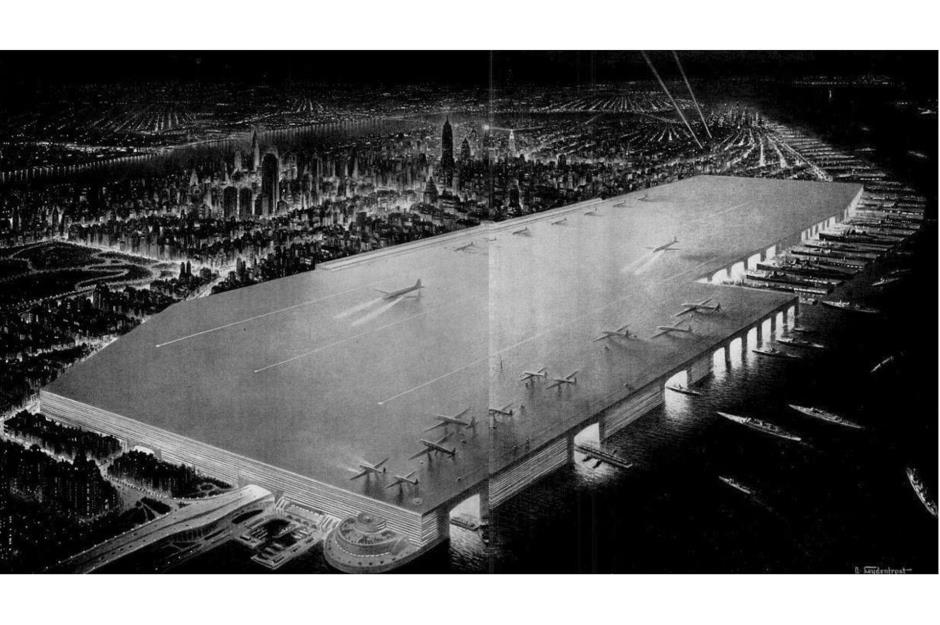
Courtesy Life Magazine/Google Archive
Imagine a mile-high Art Deco skyscraper in Chicago, a magical Gaudí tower and giant globe in New York, or London's Tower Bridge in Washington DC, complete with Hogwarts-style turrets. Believe it or not, these fantastical structures are just four of the most incredible American projects that didn't make it off the drawing board. We take a fascinating look at what might have been.
The Beacon of Progress, Chicago
Constant-Désiré Despradelle/PD-1923
This lofty monument was designed by Constant-Désiré Despradelle for the Chicago World Fair of 1893. The French-born professor of architecture at MIT envisaged the tower as a tribute to the founding of America but was unable to raise the level of finance required for his ambitious project.
The Beacon of Progress, Chicago
Constant-Désiré Despradelle/PD-1923
A total of 13 obelisks, which represent the original 13 colonies of the USA, merge to form a pyramid-shaped spire in the awe-inspiring design, and at 1,500-feet tall, the tower would have been the tallest structure in the world had it been built.
Manhattan Dome, New York
.jpg)
Courtesy Buckminster Fuller and Shoji Sadao
In 1960, trailblazing engineer Buckminster Fuller dreamt up a "geodesic dome spanning Midtown Manhattan that would regulate weather and reduce air pollution”. Taking up two miles of the island, the mile-high dome would have warmed the city in winter, cooled it in summer and cleaned the air.
Manhattan Dome, New York
.jpg)
Courtesy Buckminster Fuller and Shoji Sadao
Fuller believed the dome would pay for itself within 10 years with the cash saved from snow removal in winter and air con in summer, and he was convinced the city authorities would opt for the project in time. They never did and in any case, the dome would have worked out far more expensive than Fuller anticipated.
The Illinois, Chicago

Courtesy The Frank Lloyd Wright Foundation Archives/Wikimedia Commons
Soaring into the Chicago sky, the mile-high Illinois skyscraper was designed by renowned architect Frank Lloyd Wright in 1957. The imposing tower, which was slated to be made in steel, would have hogged the Windy City skyline, and then some.
The Illinois, Chicago
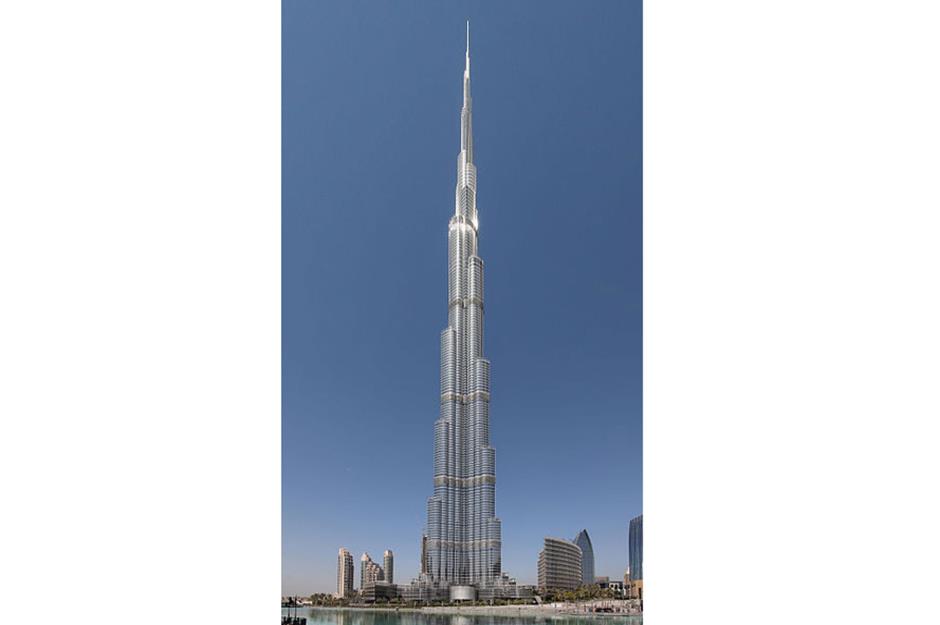
Donaldytong/Wikimedia Commons
Unfeasible, impractical and outrageously expensive, Wright's supertall skyscraper was never built but The Illinois lives on in the current tallest building in the world, Dubai's Burj Khalifa, which it partly inspired.
Civic Center, Los Angeles
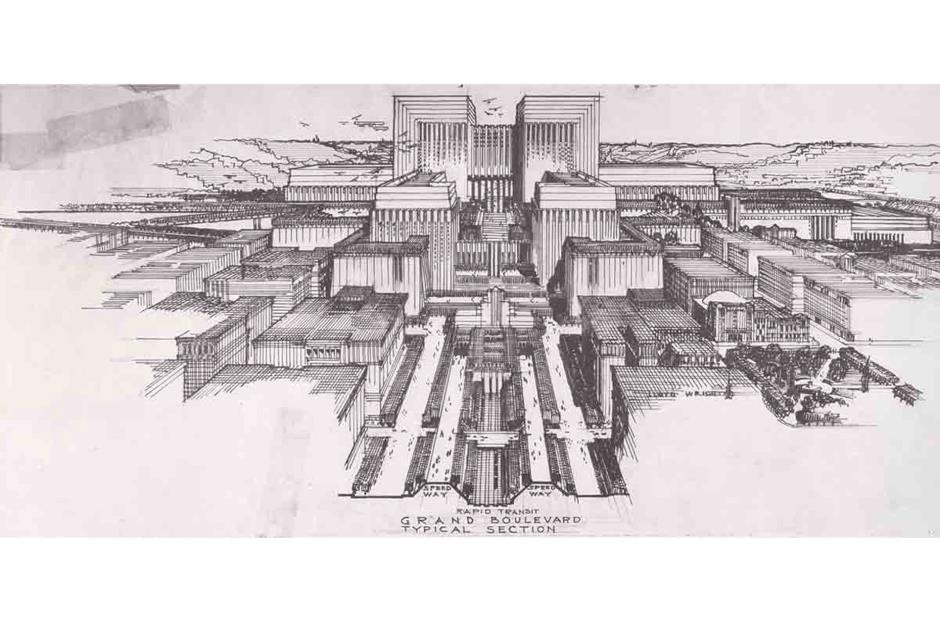
Courtesy A+D Architecture and Design Museum
Another spectacular Frank Lloyd Wright proposal, this design for the Los Angeles Civic Center was submitted by the great American architect in 1925 to the Los Angeles Times, which was running a competition sponsored by the City challenging architects to reimagine the heart of LA.
Civic Center, Los Angeles
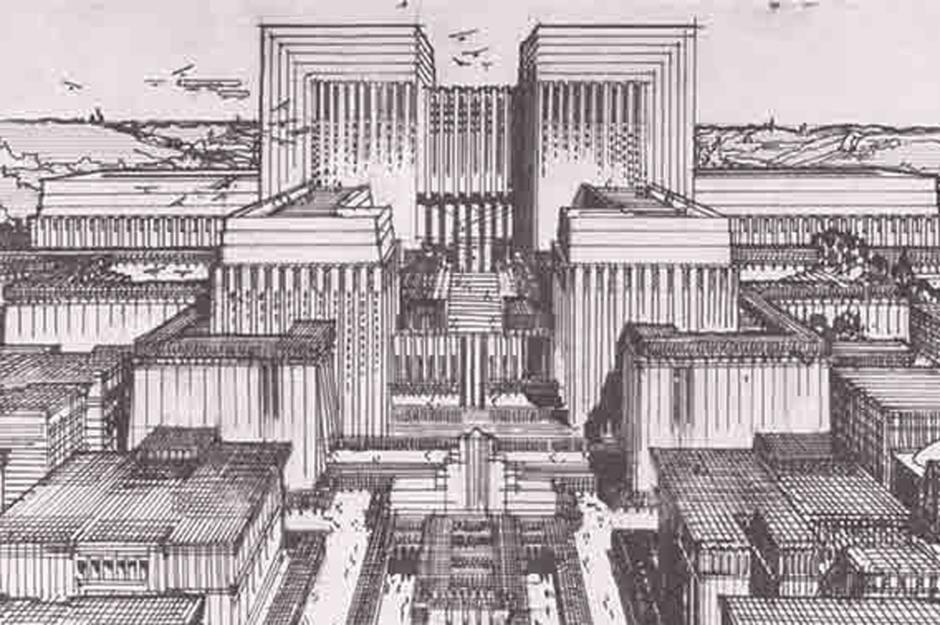
Courtesy A+D Architecture and Design Museum
The futuristic mega-structure would have featured sunken roads, terraced walkways and a number of monumental buildings housing various civic agencies. Disappointingly, Wright failed to win the competition and the City chose a far less interesting, albeit more affordable, design by Allied Architects.
Gaudí's Hotel Attraction, New York
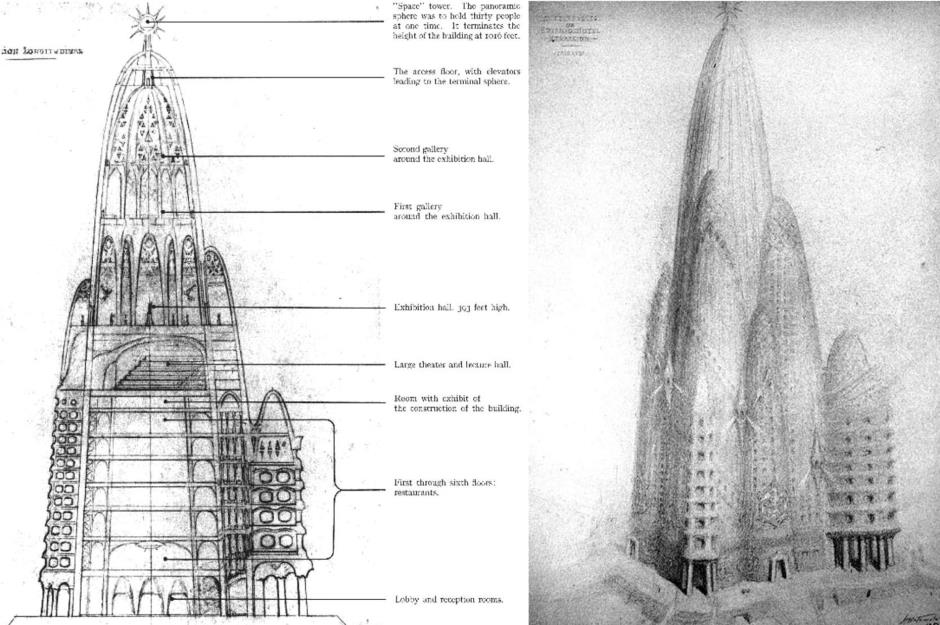
Fundació Antoni Gaudí/PD-1923 via Pinterest
The Big Apple would have given Barcelona a run for its money in the architecture stakes if Antoni Gaudí's skyscraper plan had been realized. Commissioned in 1908, the eye-catching tower, which shares design features with the famous Sagrada Família church, would have stood at 1,180 feet tall. Details of the project only surfaced in 1956 and it is unclear exactly why the magical skyscraper was never built.
Gaudí's Hotel Attraction, New York
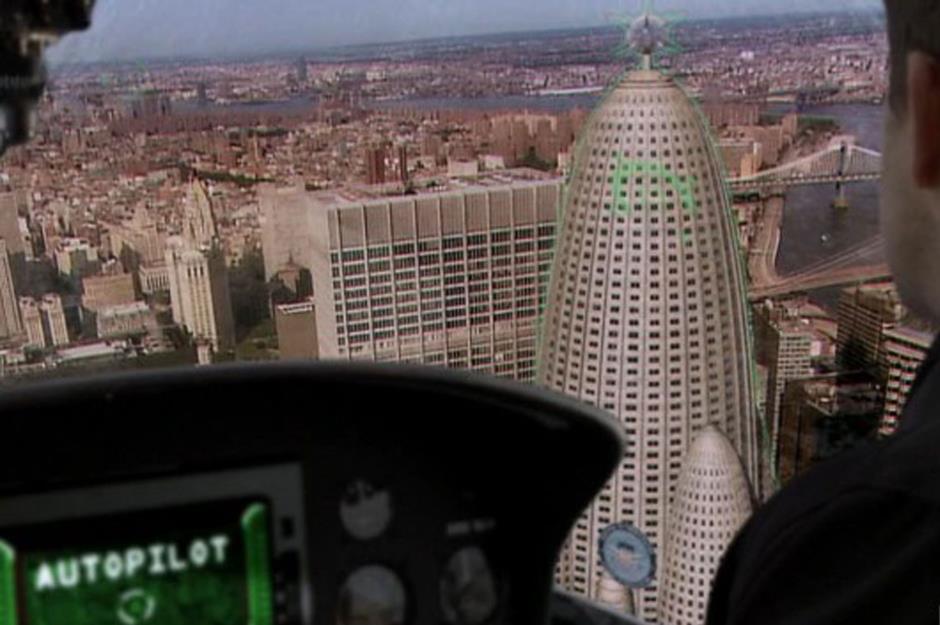
Courtesy Fox
In 2003, the Gaudí Foundation proposed the tower as a replacement for the World Trade Center but its offer was politely declined. Hotel Attraction was featured in Fox's alternate alternate show Fringe (pictured) in 2010, which gives you an idea how the skyscraper might have looked in Manhattan.
The White House, Washington DC
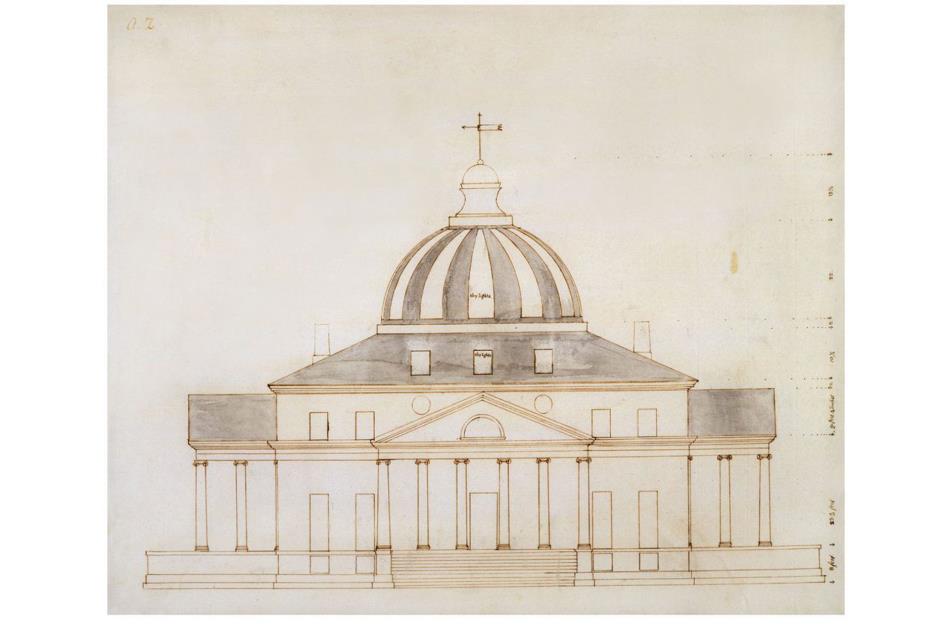
Courtesy Maryland Historical Society
The Neoclassical White House is recognizable the world over, but 1600 Pennsylvania Avenue might have looked very different. A total of nine proposals were considered by George Washington in 1792, including this domed structure submitted anonymously by Thomas Jefferson. In the end of course, Washington opted for Irish architect James Hoban's iconic design.
The White House, Washington DC
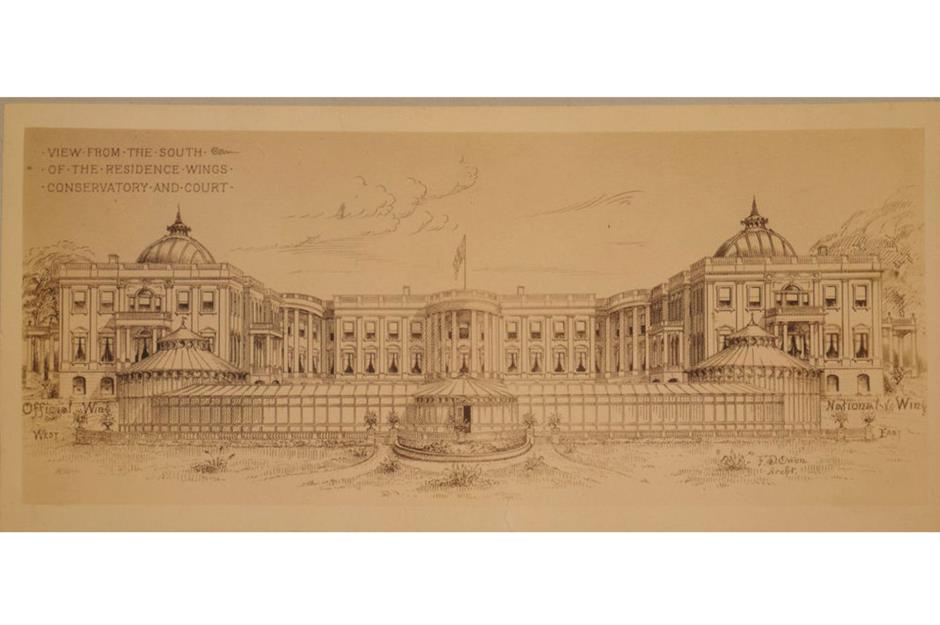
Courtesy Library of Congress, Prints and Photographs Division
These ornate additions to the then cramped White House were proposed by architect Frederick D. Owen in 1901. Careful not to spoil the building's Neoclassical simplicity, Theodore Roosevelt opted instead for a design by architectural firm McKim, Mead & White that was more in keeping with the building, and the West Wing, as it came to be known, was completed in 1902.
Observation Tower, Phoenix
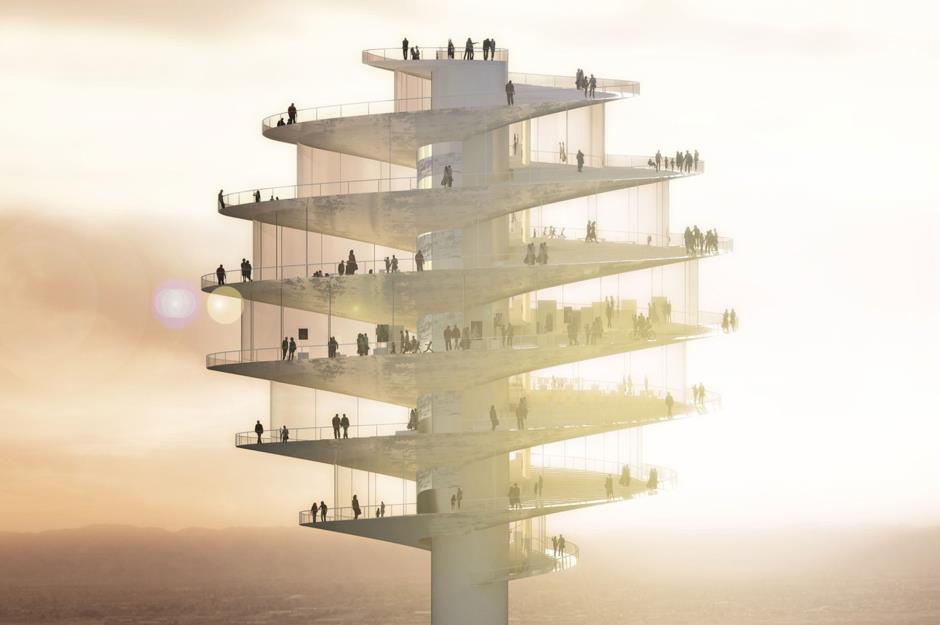
Courtesy BIG
World-famous landmarks are few and far between in sun-baked Phoenix, so this viewing tower in the shape of a honey dipper would make for a welcome addition to the Arizona city's nondescript skyline.
Observation Tower, Phoenix
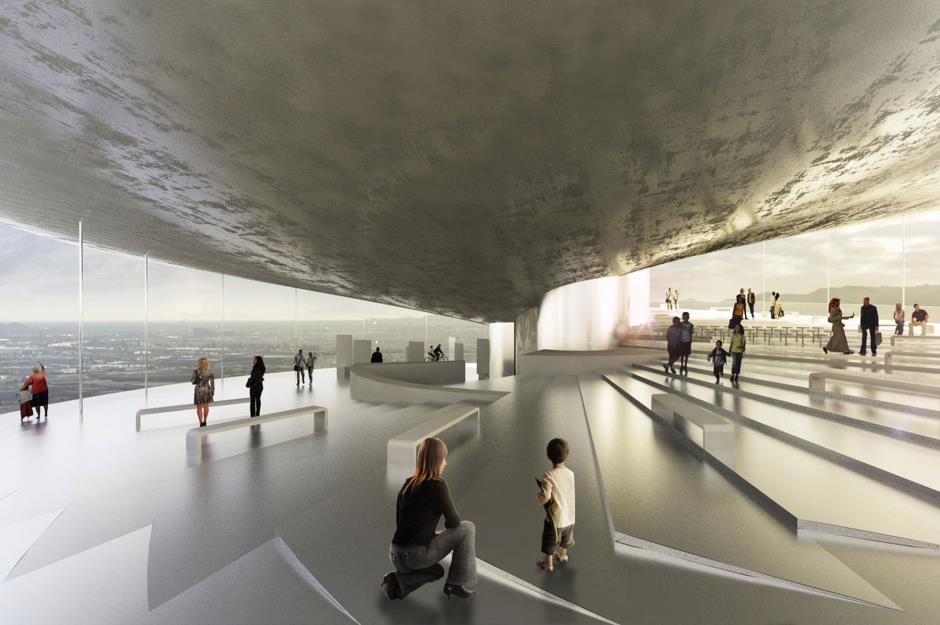
Courtesy BIG
Dubbed 'The Pin', the distinctive observation Tower, which was commissioned by developer Novawest in 2012, is the work of Danish architectural firm BIG. Sadly, the 420-foot structure didn't get the green light. Novawest failed to secure the site and the project is currently on hold.
Trump Tower, Los Angeles
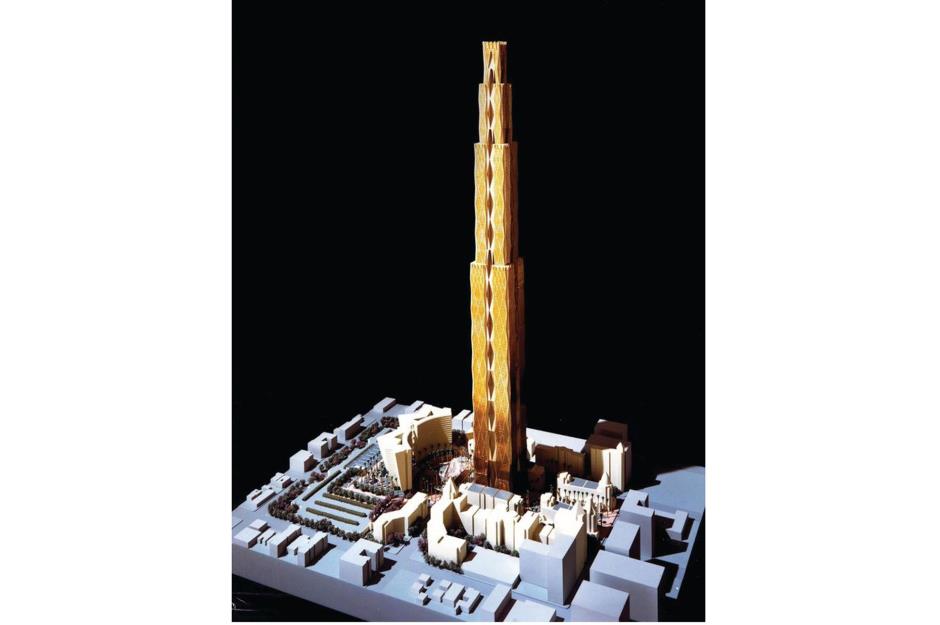
Courtesy Johnson Fain
In 1989, Donald Trump set his sights on snapping up the Ambassador Hotel site on LA's Wiltshire Avenue in order to build the world's tallest building, a blingy $1 billion (£780m) tower standing 125-stories high.
Trump Tower, Los Angeles
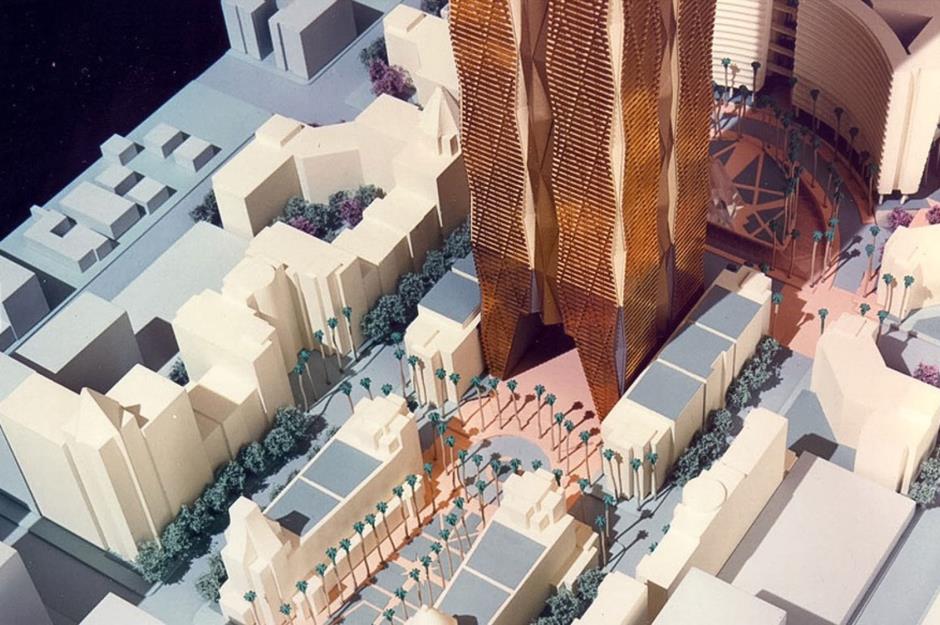
Courtesy Johnson Fain
Conceived by architect Bill Fain, Trump's golden tower would have boasted a flash diamond-pattern design, but it wasn't meant to be. The purchase of the site was contested by the Los Angeles Unified School District, which had earmarked the land for a school, and following years of litigation, the project was abandoned.
Manhattan Airport, New York

Courtesy Life Magazine/Google Archive
An airport on a roof in Midtown Manhattan – what could possibly go wrong? This bizarre plan was the brainchild of real estate developer William Zeckendorf and featured in the March 18, 1946 issue of Time magazine.
Manhattan Airport, New York
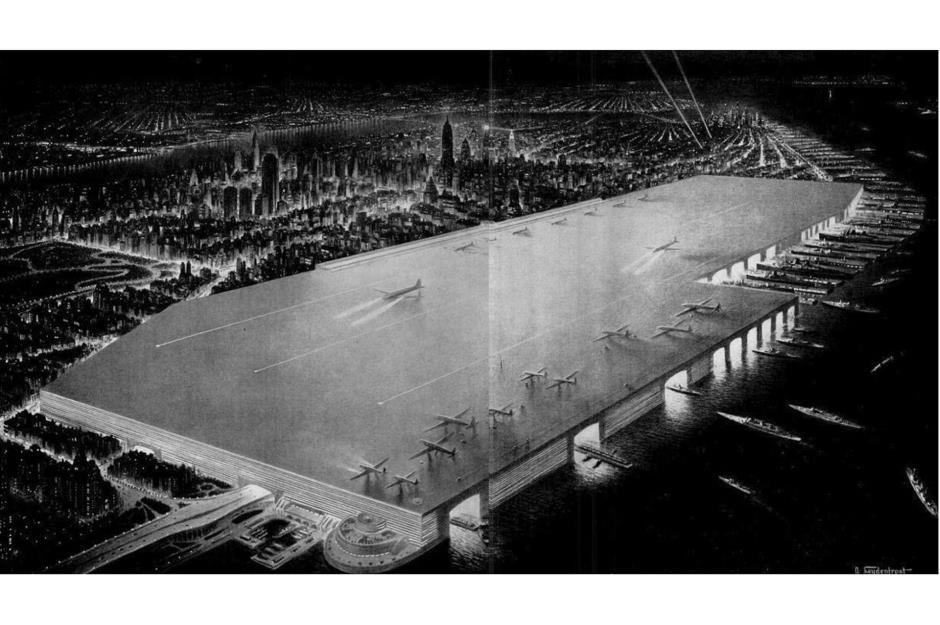
Courtesy Life Magazine/Google Archive
Sprawling over 990 acres, the airport would have covered 144 blocks in central Manhattan, and would have featured ship docking areas. As might have been expected, the projected $3 billion (£2.3bn) price-tag – $37 billion (£28.7bn) in today's money – not to mention the massive disruption it would have caused, scuppered Zeckendorf's dream.
LAX proposal, Los Angeles
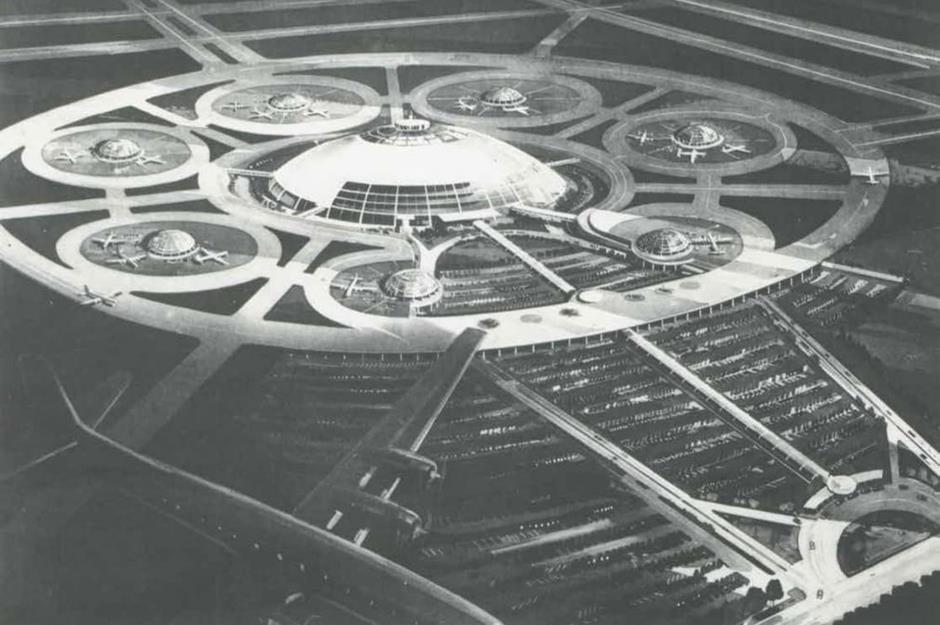
Courtesy LAWA
Staying with airports, this fabulous Space Age design for LAX was proposed by Los Angeles-based architectural firm Pereira & Luckman in 1952. The airport would have a featured a colossal glass-domed central terminal with tunnels leading to seven 'satellite' gates.
LAX proposal, Los Angeles
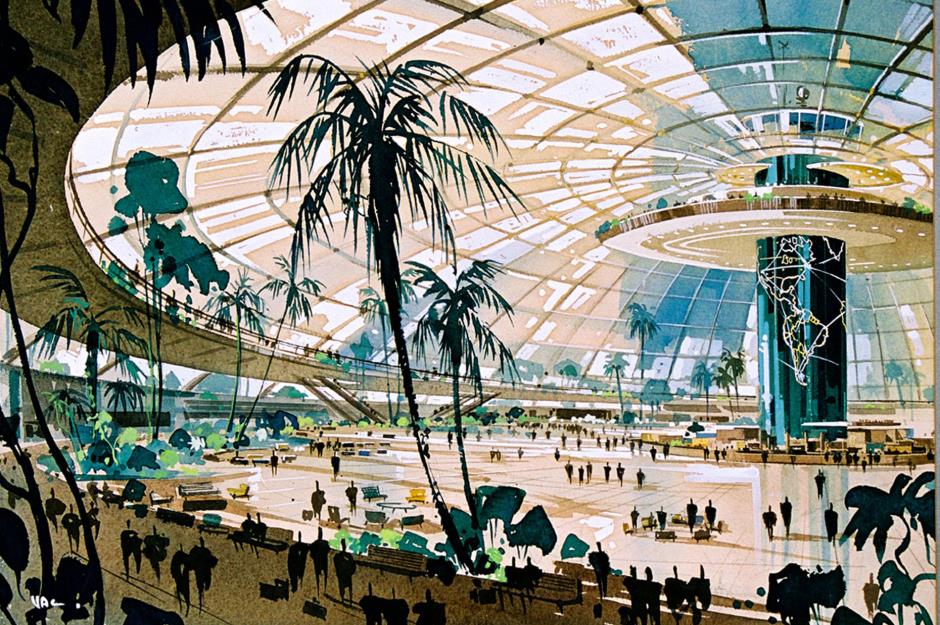
Courtesy LAWA
The powers that be balked at the eye-watering cost of the airport – the air con bill alone would have been astronomical – and didn't like the idea of a single terminal. Needless to say, Pereira & Luckman's radical master plan for LAX never saw the light of day.
Skyscraper bridges, New York
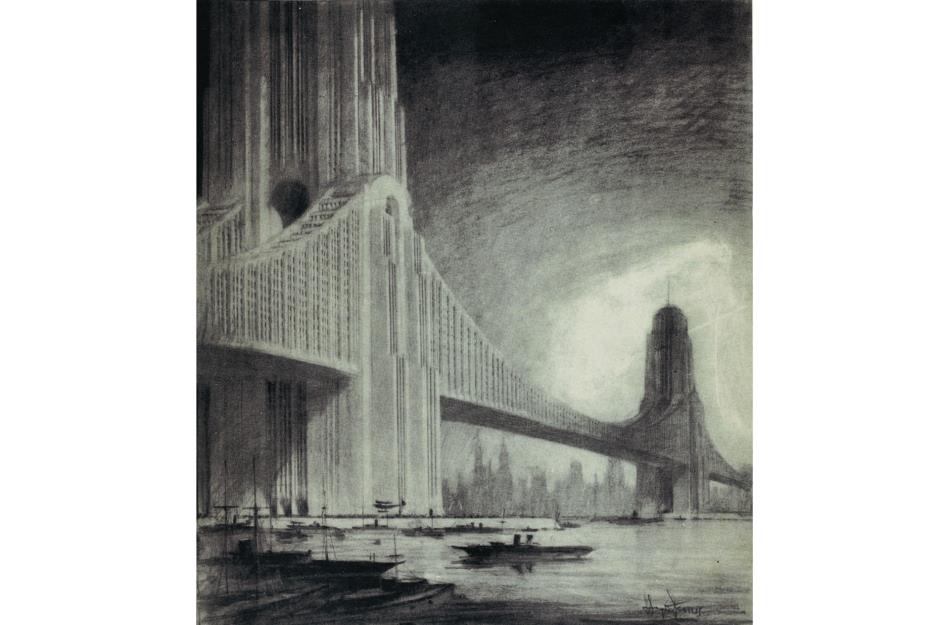
Courtesy the Skyscraper Museum
In an attempt to help solve New York City's housing shortage, Rockefeller Center architect Raymond Hood came up with this jaw-dropping plan for a series of bridges over the Hudson River, housing numerous 60-storey towers.
Skyscraper bridges, New York
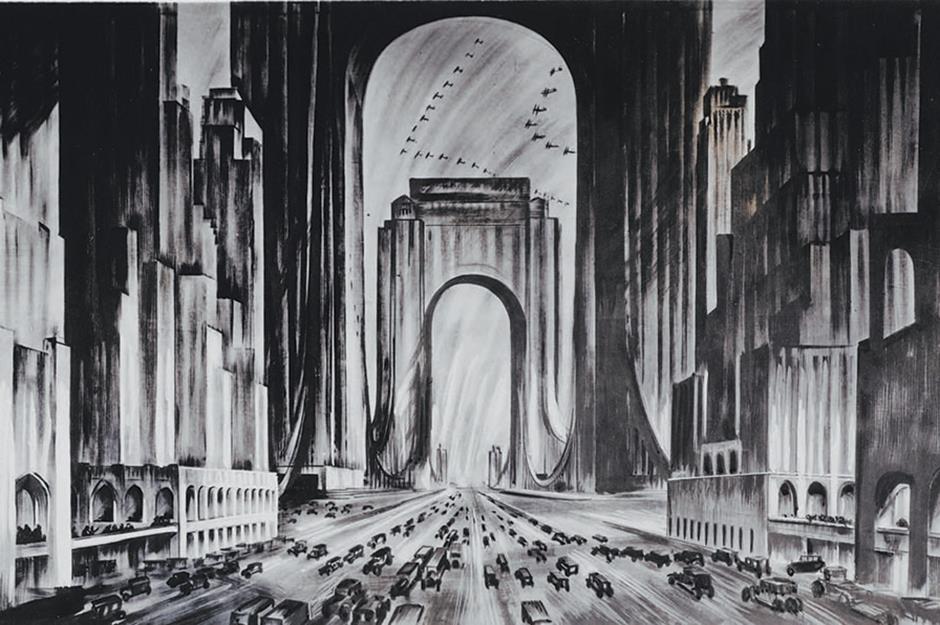
Courtesy the Skyscraper Museum
Like many of the projects in our round-up, Hood's skyscraper bridges plan was deemed impractical and completely unaffordable, but his design for the Rockefeller Center managed to work in some of the plan's Art Deco motifs.
Suspended Auto Motor Railway, San Francisco

Courtesy Center for Bibiliographic Studies and Research, University of California/PD-1923
In 1910, inventor Fletcher E. Felts came up with this novel design for a suspended railway connecting San Francisco with Oakland. Passengers would be suspended in 'bullets', which would make the journey in just five minutes.
Suspended Auto Motor Railway, San Francisco
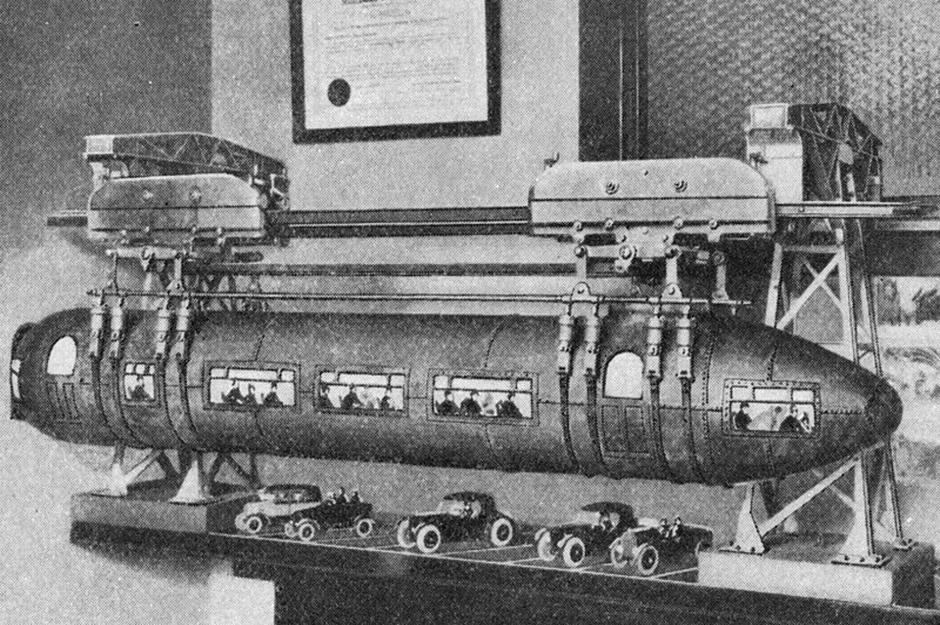
Courtesy Science and Invention magazine/PD-1923
An early, low-tech precursor to Elon Musk's Hyperloop project, the concept, which appeared in the San Francisco Call newspaper, was unworkable in practice and never taken seriously by the authorities.
Arlington Memorial Bridge, Washington DC
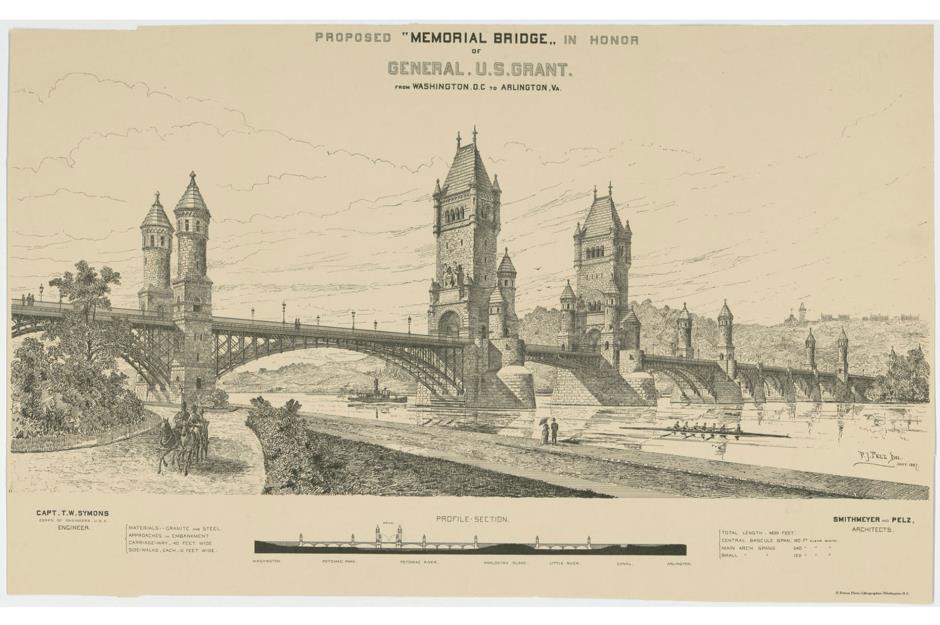
National Building Museum/PD-1923
Reminiscent of London's emblematic Tower Bridge, this fairytale-like design for the Arlington Memorial Bridge was proposed in 1887 as a memorial to Ulysses S. Grant by Paul J. Pelz, the architect who went on to design the Library of Congress.
Arlington Memorial Bridge, Washington DC
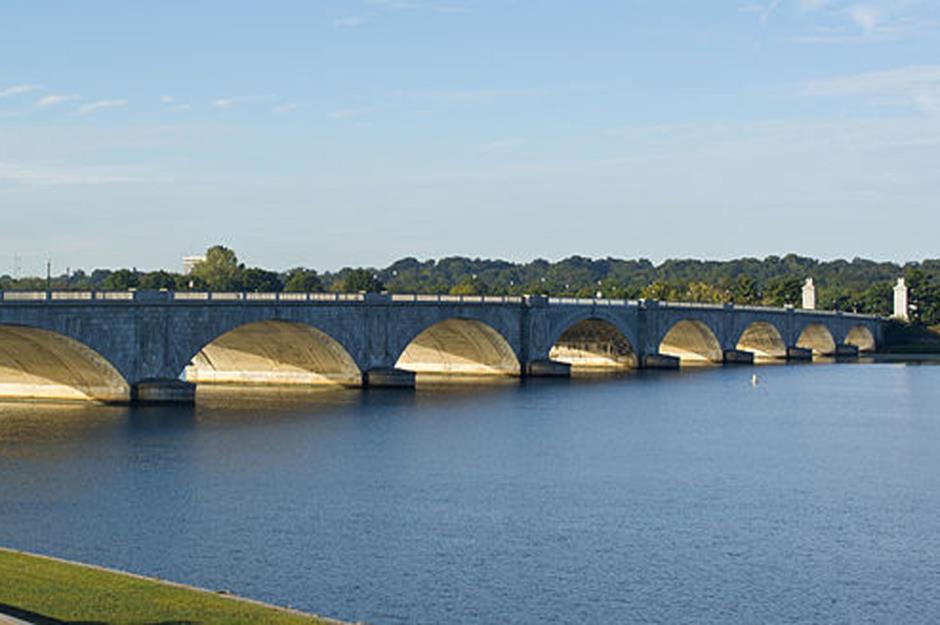
Daisy Dee/Wikimedia Commons
Congress wasn't too keen on facilitating a memorial to Grant and blocked funding of the bridge. The legislative body eventually approved funding for a Neoclassical bridge memorializing America's fallen, and the elegant but not so exciting Arlington Memorial Bridge was completed in 1932.
The Library of Congress, Washington DC
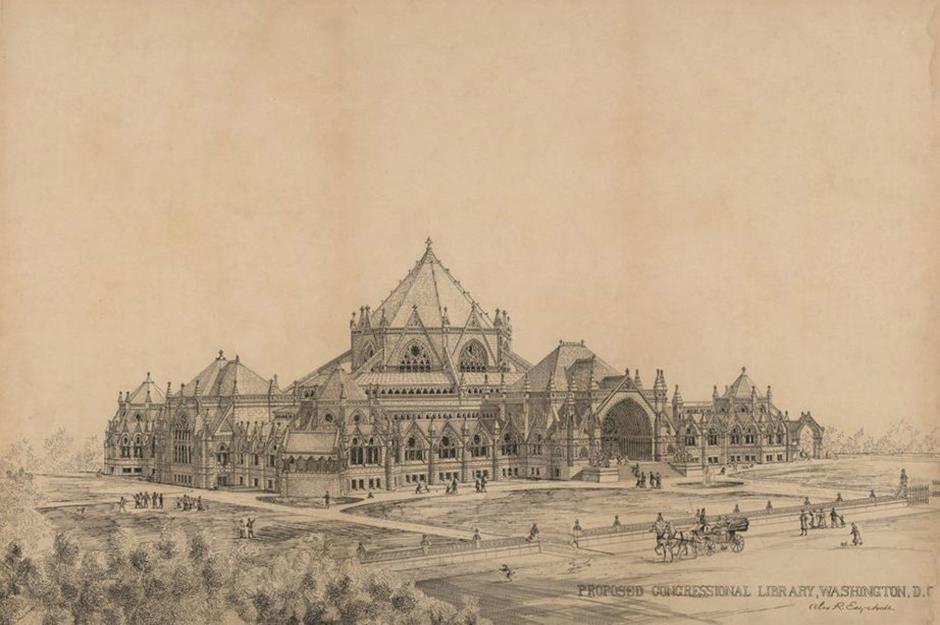
Courtesy Library of Congress, Prints and Photographs Division
Architect Paul J Pelz's design for the Library of Congress ultimately prevailed, but several plans were considered for the building following a competition in 1873, including this cathedral-like Neo-Gothic beauty.
The Library of Congress, Washington DC
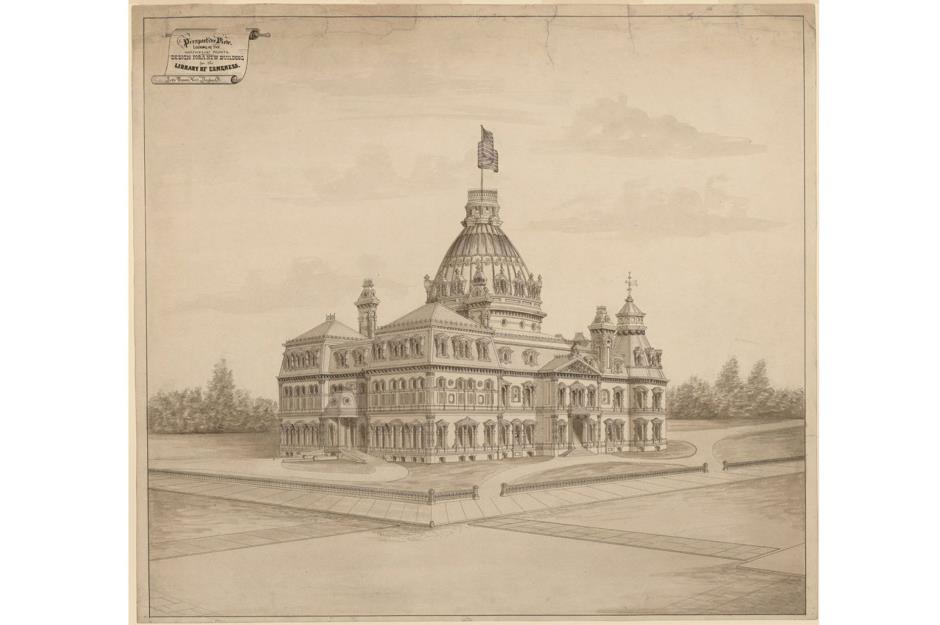
Courtesy Library of Congress, Prints and Photographs Division
More château than civic building, this highly ornamental Beaux-Arts design was also in the running. Pelz's winning design boasts a similar Beaux-Arts style but is far less fussy and embellished.
The Coney Island Globe Tower, New York
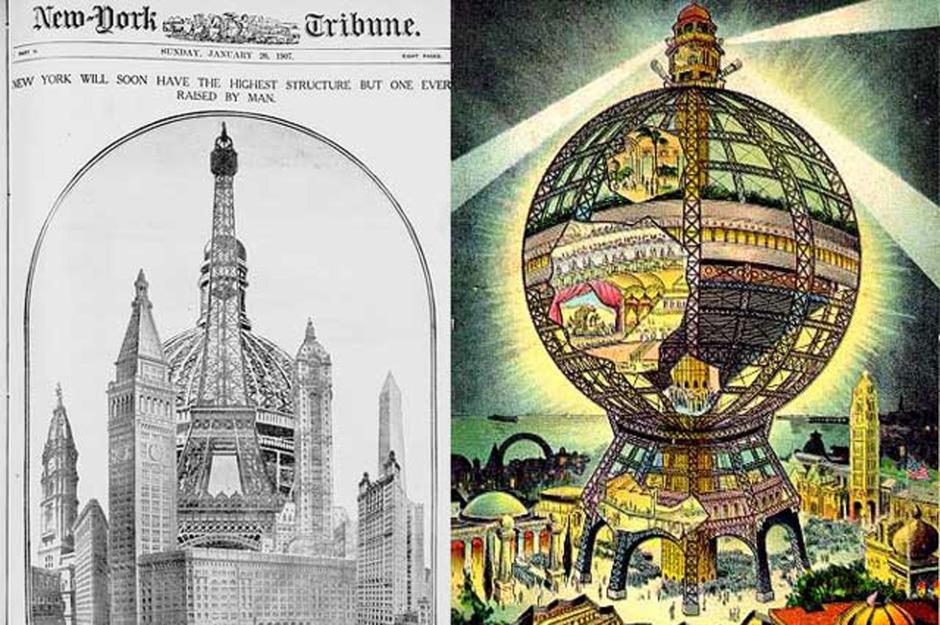
Courtesy Library of Congress, Prints and Photographs Division
Architect Samuel Friede caused a sensation in 1906 when his plan to build a 700-foot dome in Coney Island made the front page of the New York Tribune. The gigantic dome would have been big enough to house everything from a 50,000-room hotel to casinos and circus rings.
The Coney Island Globe Tower, New York
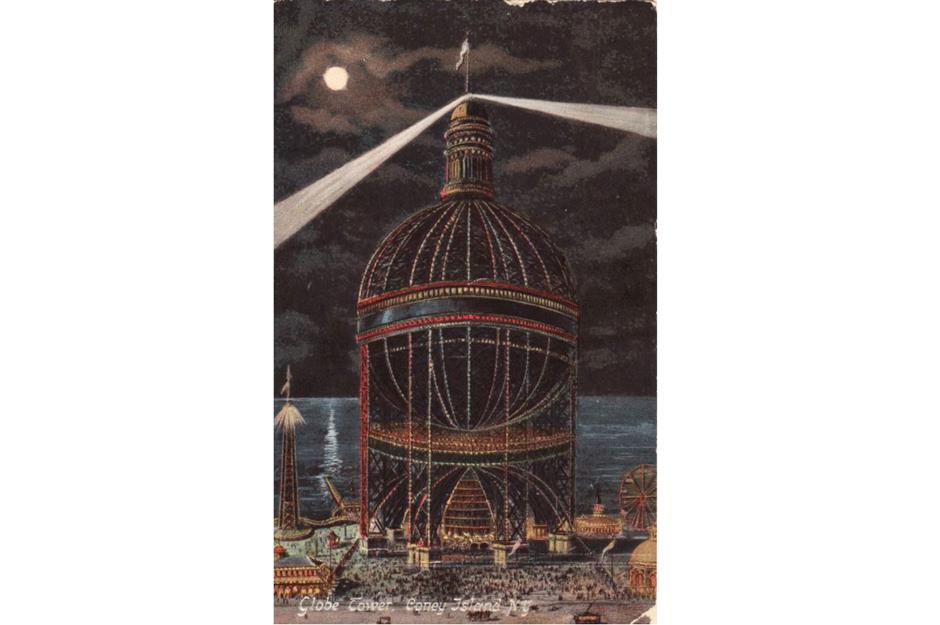
Courtesy Library of Congress, Prints and Photographs Division
Friede set out to raise $1.5 million (£1.2m) to realize the project, offering investors unrealistic returns to garner their cash. The project experienced delay after delay, and in 1908, the Coney Island Globe Tower was revealed to be an elaborate fraud.
Comments
Be the first to comment
Do you want to comment on this article? You need to be signed in for this feature